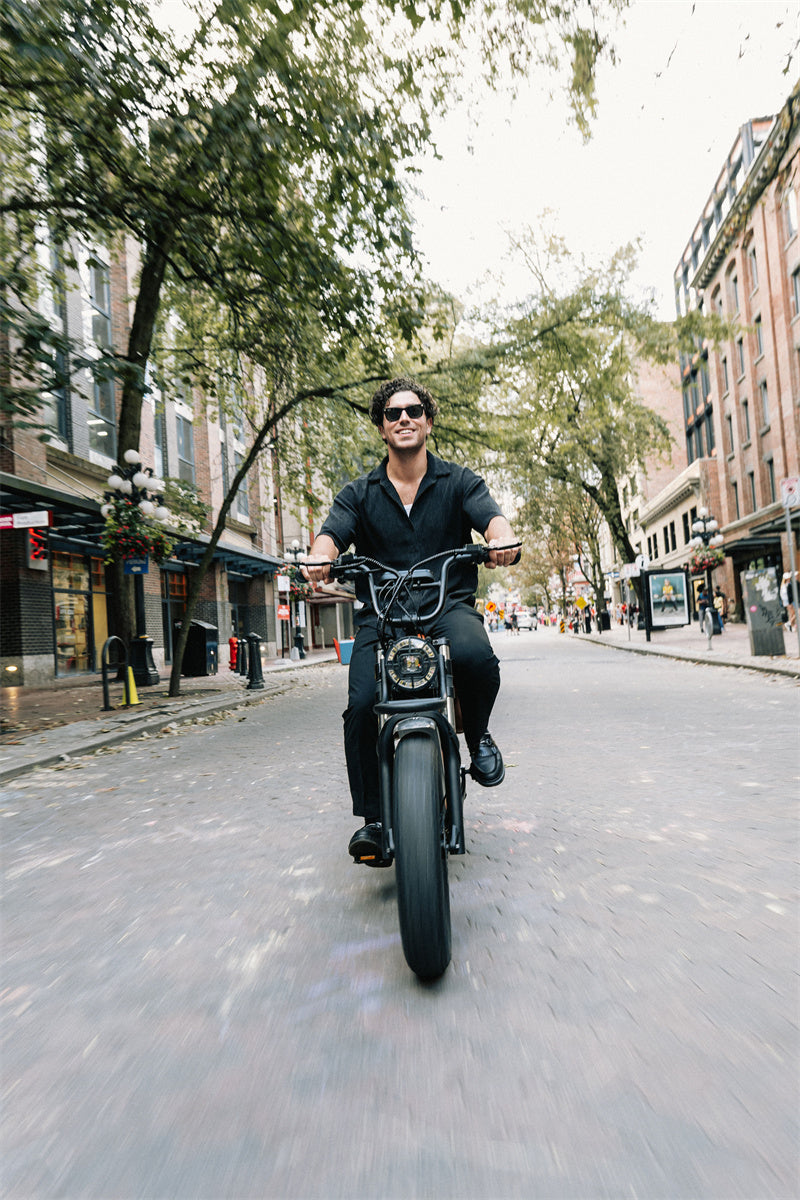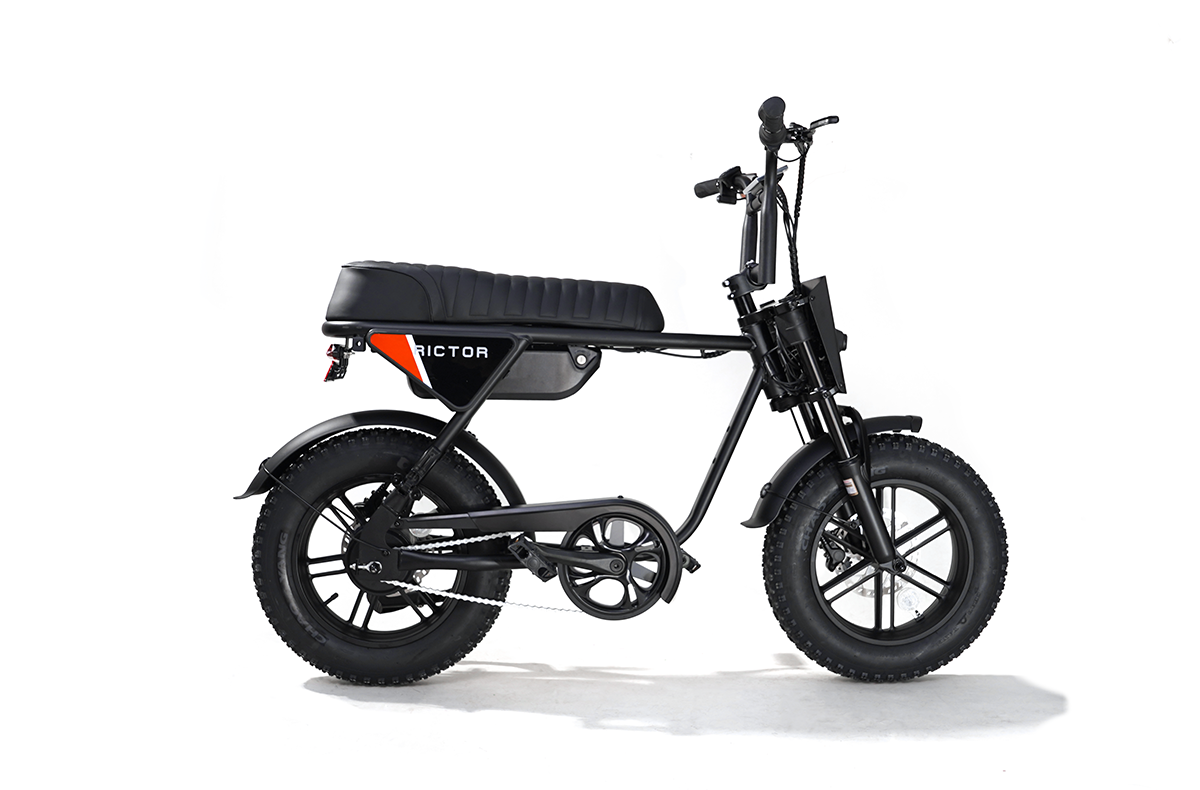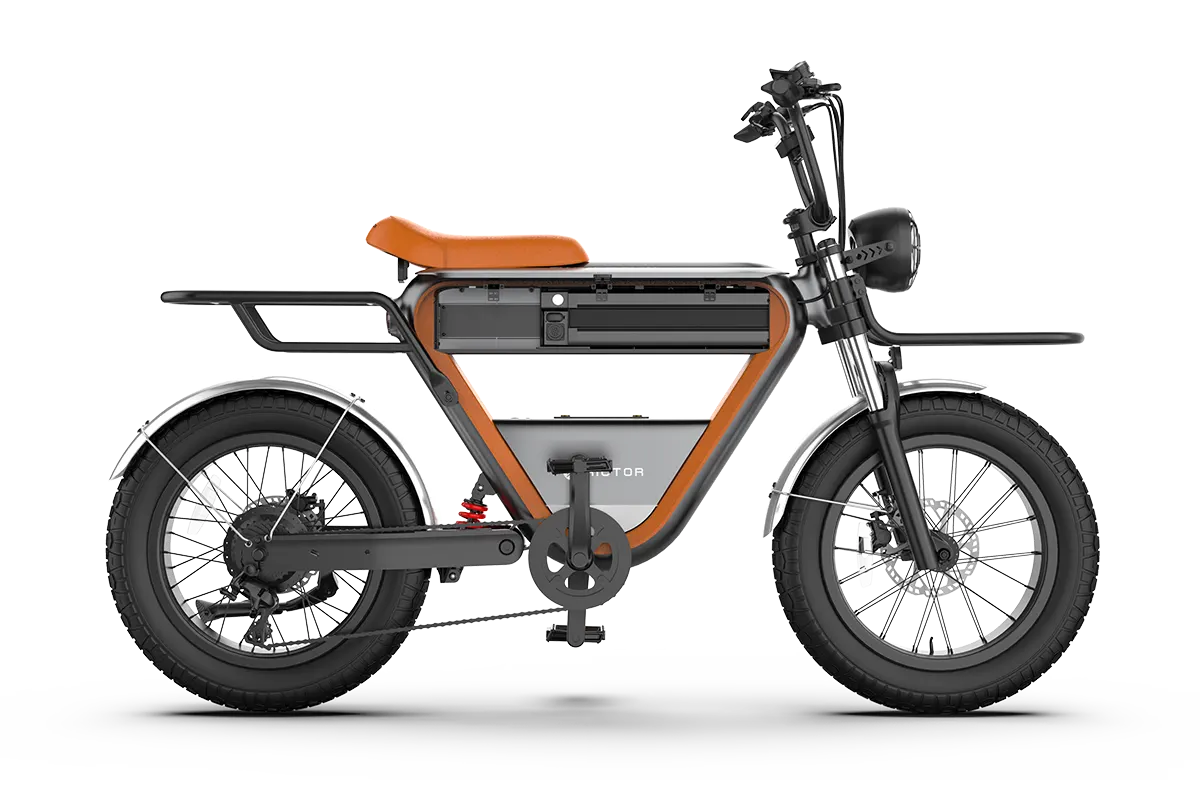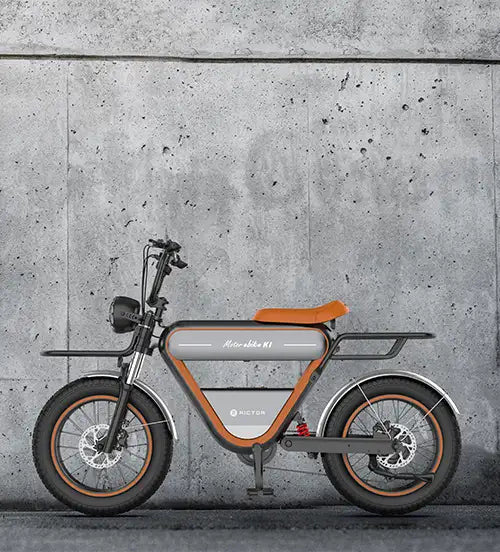
Are Electric Bikes Allowed on Bike Trails?
As part of the growing trend in micro-mobility, electric bikes are changing the way people commute and explore their surroundings.
Are you already riding your e-bike and wondering where you can take it?
The answer isn’t as simple as “anywhere.” It largely depends on the class of your e-bike, as different types have specific restrictions on where they can be legally ridden.
If you're still deciding whether to buy your first e-bike or looking to upgrade to a new model, the Rictor K1 is an excellent option. It’s half bike, half motorcycle—the perfect blend of performance and style.
This new style electric bike offers a unique riding experience that could be just what you're looking for.

How Does An Electric Bike Work
Electric bikes have changed modern cycling by offering riders an additional source of power.
These bikes operate using a combination of a battery, an electric motor, and traditional pedals.
The motor assists the rider, providing extra propulsion when needed, especially on inclines or during extended rides.
The battery powers the motor, and its size determines the range of the e-bike.
Some e-bikes are equipped with pedal-assist technology, meaning the motor kicks in when the rider starts pedaling, while others have a throttle, allowing the bike to move without pedaling.
The key components of an e-bike are:
-
Motor: This can be rear hub or mid drive, delivering power to the wheels.
-
Battery: Typically lithium-ion, these batteries can range from 300Wh to over 700Wh.
-
Controller: A control system that regulates the power from the battery to the motor.
E-bikes are designed to make cycling more accessible and enjoyable, offering a more effortless experience while maintaining the health benefits of cycling.
SEE ALSO NEW Law is Coming! Do you need a license for electric bike?
What Is A Class 1, 2, And 3 E-Bike
The classification of e-bikes is crucial as it determines where the bikes are allowed to be ridden.
-
Class 1: This type has a pedal-assist only system, meaning the motor provides assistance only when the rider pedals. The maximum speed for assistance is 20 mph. Class 1 e-bikes are the most universally accepted and are often allowed on traditional bike paths and shared-use trails.
-
Class 2: These bikes come equipped with a throttle in addition to the pedal-assist feature. With a throttle, riders can engage the motor without pedaling, and like Class 1, the speed tops out at 20 mph. The presence of a throttle makes Class 2 e-bikes subject to different regulations in some areas, but they are still widely accepted on many trails.
-
Class 3: Known as speed pedelecs, these bikes offer pedal-assist up to a maximum speed of 28 mph. They are ideal for commuters and those seeking a faster ride. However, Class 3 e-bikes are not always allowed on bike trails due to their higher speed, and their use is more restricted compared to Class 1 and Class 2 models.

Why Are Electric Bicycles Limited To 28 Mph
E-bikes are capped at 28 mph for several safety and regulatory reasons. In many countries, including the United States, e-bikes are treated similarly to bicycles in terms of road use and regulations. However, the faster speeds enabled by motors create unique risks:
-
Safety: At speeds higher than 28 mph, the risk of accidents increases significantly. Riders need more time to react to obstacles, and braking distances grow longer. Additionally, at higher speeds, collisions are more likely to result in serious injury.
-
Legal Classification: E-bikes classified under this speed limit can still be categorized as bicycles rather than motor vehicles. This distinction ensures that riders do not need a license or insurance to operate them. By limiting speed, e-bikes remain within the bounds of bicycle regulations rather than motorcycle rules.
-
Trail Compatibility: Bike trails are often shared with pedestrians and other cyclists. Higher speeds can pose dangers to others on the trail, and many trail systems are designed with lower-speed traffic in mind.
The 28 mph limit strikes a balance between providing an enhanced riding experience without crossing into the domain of high-speed motor vehicles.

Can Electric Bikes Go On Trails
Generally, Class 1 and Class 2 e-bikes are more likely to be allowed on multi-use trails and bike paths, especially in parks or urban areas. But whether an electric bike is allowed on specific trails depends on local regulations and the type of e-bike in question.
-
Class 1 e-bikes are typically accepted on most bike trails, as their pedal-assist system is considered similar to that of traditional bicycles.
-
Class 2 e-bikes, which include a throttle, are often accepted, but some trails may restrict their use because of the throttle's potential for higher speed.
-
Class 3 e-bikes, with their top speed of 28 mph, may face more restrictions, particularly on recreational trails, where safety concerns are a factor. Some parks and protected areas may only allow Class 1 and prohibit higher-speed bikes.
It’s always a good idea to check the rules of the specific trail you plan to ride, as restrictions can vary from state to state, and even trail to trail, within parks and municipalities.
Why Are Electrical Bikes Banned On Some Trails
Several reasons contribute to e-bikes being banned or restricted on certain trails, with the primary concerns revolving around safety, environmental impact, and user conflicts.
-
Safety: Higher speeds can lead to accidents on shared-use trails, where pedestrians, runners, and traditional cyclists are present. The presence of faster-moving e-bikes can create hazards, especially on narrow or winding trails.
-
Trail Damage: Some trails, particularly in natural reserves or conservation areas, are designed for low-impact use. The additional weight of an e-bike, especially on unpaved or sensitive surfaces, can contribute to trail erosion and increased maintenance requirements. This is particularly a concern in areas with steep inclines or fragile ecosystems.
-
User Conflicts: Traditional cyclists and hikers may perceive e-bikes as a disruption to the natural flow of traffic on trails. Faster speeds can lead to conflicts and complaints, especially in areas where quiet, nature-focused recreation is the primary goal.
-
Wildlife Concerns: In protected areas, the noise and speed of e-bikes may disturb wildlife, particularly in regions where animals are accustomed to the quieter pace of human foot traffic or non-motorized bicycles.
Because of these factors, certain trails, particularly in national parks and conservation areas, may limit or ban the use of e-bikes, particularly Classes 2 and 3.
Which States Prohibit E-Bikes On Bike Trails
The regulations surrounding e-bike use on bike trails vary widely from state to state, as individual states have the authority to set their own rules for where e-bikes can be ridden. Some states have more restrictive policies, while others allow broader access to bike trails.
California: California is one of the most e-bike-friendly states, with a comprehensive classification system in place. However, in certain parks and natural areas, Class 3 e-bikes are prohibited from specific trails.
New York: New York has had a more conservative approach to e-bikes, with Class 3 e-bikes banned from bike paths and many park trails. Class 1 and 2 e-bikes have more flexible access, but it's always advised to check local rules before riding in parks or protected areas.
Colorado: Colorado allows Class 1 e-bikes on most trails that are open to bicycles, but Class 2 and Class 3 e-bikes may be restricted from some state parks and natural reserves due to concerns about speed and trail erosion.
Utah: In Utah, Class 1 e-bikes are allowed on most non-motorized trails, but Class 2 and 3 models are restricted from multi-use paths that do not permit motorized vehicles.
Washington: Class 1 e-bikes are generally allowed on bike paths, while Class 2 and Class 3 e-bikes are restricted from certain types of trails. In more remote and rugged areas, e-bike access may be more limited.
Each state has its own set of rules and regulations, and it is important to familiarize yourself with the local laws governing e-bike use on trails. Additionally, local municipalities may have their own regulations that differ from statewide rules, particularly regarding Class 2 and Class 3 e-bikes.
FAQs
Do I need a license to ride an electric bike?
In most states, you do not need a license to ride a Class 1 or Class 2 e-bike. However, some areas may require a license for Class 3 e-bikes due to their higher speed. It’s important to review local regulations.
Can I ride my electric bike in the rain?
Yes, most electric bikes are designed to be water-resistant, meaning they can be ridden in light rain. However, it’s advisable to avoid riding in heavy downpours or through deep water to prevent damage to the electrical components.
How often do I need to charge my electric bike’s battery?
The frequency of charging depends on your usage and the battery capacity. On average, you’ll need to charge an e-bike battery after 20 to 70 miles of riding, depending on the assist level and terrain. Frequent short trips may require charging more often.




